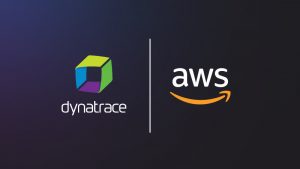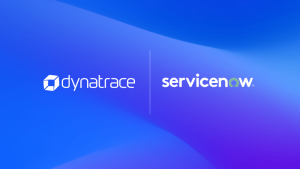Dynatrace and Google Cloud Platform (GCP) experts, Henrik Rexed, Dynatrace cloud native advocate, Gari Singh, GCP product manager, and Alisha Stull, GCP partner engineer speak on how AI-powered observability and automation can help organizations get the most out of Kubernetes in hybrid and multi-cloud environments.
Kubernetes has undeniably become widely adopted as an effective solution for deploying applications, offering an abundance of features for optimizing releases and scaling workloads. However, with these benefits come complexities in terms of cloud management, Kubernetes observability, and automation, making it imperative for enterprises to address these intricacies to enhance reliability, performance, and resource usage.
In the webinar “Intelligent Kubernetes observability and automation,” Dynatrace expert Henrik Rexed and GCP experts Gari Singh and Alisha Stull provide insights into leveraging AI-powered observability and automation to gain granular insights into Kubernetes environments on Google Cloud Platform at an enterprise scale. Rexed, Singh, and Stull outline the importance of metrics, traces, logs, events, and the role they play in achieving full–context Kubernetes observability and driving automated responses in hybrid and multi-cloud environments.
The Kubernetes observability complexity challenge
Now that cloud computing has become essential to how organizations develop and deliver applications, they face new challenges managing their application execution environments. By deploying applications as many separate microservices managed by Kubernetes, these environments can become complicated, especially if the organization has a multi-cloud, hybrid-cloud architecture, or is using elements of a legacy-cloud environment. Organizations are doing their best to monitor what they can, often using disparate tools for logs, infrastructure, and digital experience. So many tools can result in data inconsistencies.
The webinar begins with an overview of Kubernetes, emphasizing its popularity and the technical simplicity that underscores the value of infrastructure as code. The speakers highlight the various Google Kubernetes Engine (GKE) user personas working with Kubernetes, including platform owners and project teams; each with distinct expectations and challenges in utilizing the platform. To address the diverse needs of these personas, the online seminar explores the significance of providing features that cater to all user roles.
Better together with Dynatrace, Google Cloud, and Kubernetes observability
Purpose-built for the cloud, Dynatrace automatically discovers, baselines, and intelligently monitors dynamic hybrid-cloud environments while enabling automatic deployment and configuration of application components in Kubernetes. With AI continuously baselining performance and serving precise root causation and contextual data for rapid MTTR, Dynatrace enables organizations to pinpoint problems and potential issues within their Kubernetes environments and throughout their multicloud architecture. With this comprehensive observability, teams can confidently optimize and deliver exceptional user experiences with a single view across the Google Cloud ecosystem.
Companies relying heavily on their technical infrastructure use Kubernetes to their advanced container orchestration systems to quickly deploy numerous containers to handle any upcoming surges in traffic. To ensure everything runs smoothly, they employ the Dynatrace automated monitoring and observability solution. The Dynatrace platform automatically identifies and monitors all newly spawned containers, capturing essential data and metrics at scale. This proactive approach helps customers avoid costly downtime and provides real-time visibility into their infrastructure, eliminating any potential blind spots or gaps in their monitoring.
Easily solve Kubernetes observability issues in multicloud environments
Rexed, Singh, and Stull provide valuable insights into addressing challenges associated with Kubernetes adoption. With such heavy importance on observability and automation at an enterprise scale, this session serves as a guide to optimizing Kubernetes environments in hybrid and multi-cloud settings. In this webinar, the presenters cover the following:
- How metrics, traces, logs, and events can deliver full context and drive automated responses.
- How to leverage AI-powered observability and automation at enterprise scale to gain instantaneous insights and automated control of Kubernetes, in both hybrid and multi-cloud environments.
- How to accelerate your cloud adoption and usage through AI-powered and automated discovery of your Google Cloud environment.
As cloud-native and containerized application environments become more complex, organizations are seeking to enhance the reliability, performance, and resource usage of their Kubernetes deployments. Rexed, Singh, and Stull provide guidance on how to accelerate your cloud modernization adoption and usage through AI-powered and automated discovery of your Google Cloud environment.





Looking for answers?
Start a new discussion or ask for help in our Q&A forum.
Go to forum